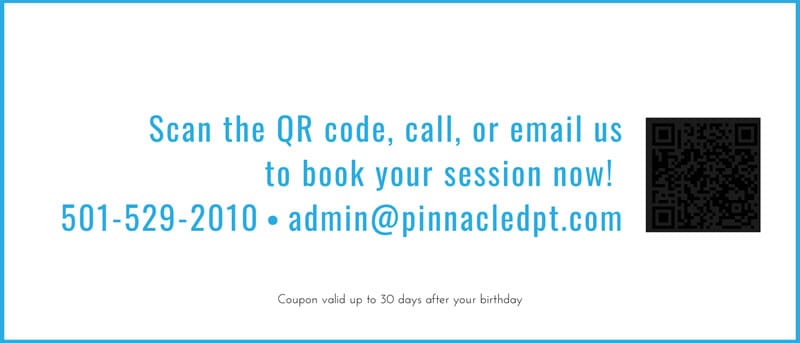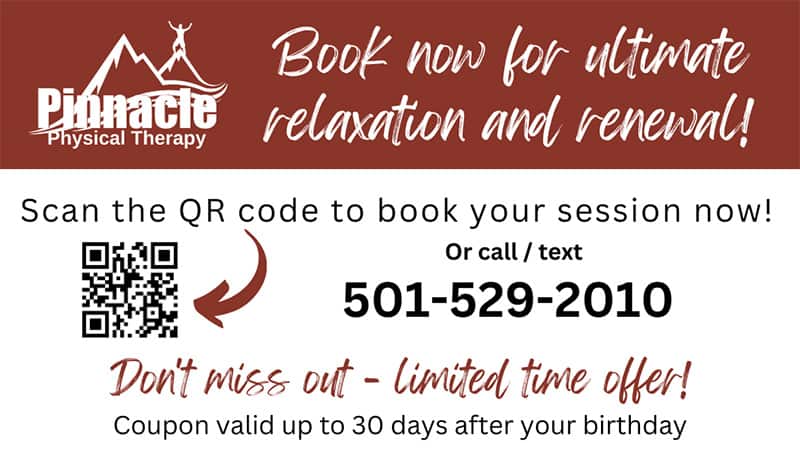Use Emotion in Marketing
Using emotion in marketing is a tactic that’s been around forever, yet sometimes I still come across ads that miss the mark. Emotion is a powerful driver in human decisions and action-taking. Much of marketing boils down to enticing people to take the actions we want them to take. Bringing emotion into marketing copy and images is a powerful way to influence our audience to take the desired action.
I was recently asked by a client, a physical therapy clinic, to rework birthday coupons that get sent out to their past clients. Their goal is to bring people back into the clinic to re-engage in a positive way.
Below is an image, front and back, of the coupon they had been using.


There’s nothing inherently wrong with this design. It is basic and conveys the necessary information.
Three Techniques to Add Emotion to Your Marketing
Here’s what I did to increase the emotion and impact:
- Leveraged language to produce more emotional copy
- Applied color treatment to increase emotion
- Used images that evoked emotion
Emotional Copy
‘Embrace bliss’, ‘treat yourself’ and ‘soothing massage’ are all phrases that elicit emotion and bring up pleasurable thoughts and imagery. ‘Don’t miss out’ adds an element of scarcity and FOMO, further encouraging the birthday recipients to take action.
Larger Image of a Smiling and Attractive Massage Recipient
Although the original design used two photos, the original photos did not show any faces. They are more informational photos, whereas the new photo of the smiling woman is much more emotional and aspirational. People instinctively respond to faces and smiles. This is confirmed by various psychological and neuroscientific studies that have explored human reactions to facial expressions. People also instinctively respond positively to attractive faces. These factors make the new photo much more powerful in terms of capturing attention and swaying the audience.
Red-tone Color Scheme
The color red is an attention getter. It has been shown in clinical studies to raise blood pressure and to cause people to take notice. That’s why stop signs are red, as are fire trucks. Red is also associated with pleasure and passion. Using red instead of blue on the coupon was a strategic choice calculated to inspire action.

Use Emotion in Your Own Marketing
In almost all cases using emotion will make your marketing materials more persuasive and engaging. The details differ depending on the circumstances. What I’ve done in this example would not work in an ad for car tires, but emotion can still be used.
For example, the classic Michelin tagline, ‘Because so much is riding on your tires’ paired with images of babies speaks to parents’ fear of their child being hurt in a car accident. Fear is a powerful emotion that all parents feel. Michelin capitalized on this universal emotion in a memorable and persuasive way. Subaru and Volvo have similarly used emotion in their messaging.
Emotions factor into the decision-making of all individuals whether we are aware of it or not. It is the job of good marketers to discover which emotions to appeal to and how to best elicit them to achieve the desired results.
Want to enliven your marketing with more emotion? Of course you do. Because if you don’t the tires may fall off your car and the milk in your fridge will sour. Those are hyperbolic statements used to grab attention and create a sense of urgency, even if the actual likelihood of those outcomes is low. Hyperbole is a literary device that involves exaggeration for emphasis or effect. We’ll talk more about hyperbole in a future post.
Thank you to Pinnacle Physical Therapy for allowing me to use their materials as an example in this post. If you liked this blog post and wish to receive more of this type of content, consider signing up for our monthly JUG Team Lightning Letter.
